Written by Terry Dunn
A low-cost, multipurpose quadcopter
Product review
Photos by the author
As seen in the July 2016 issue of Model Aviation.
Specifications
• Model type: RTF utility quadcopter • Size: 19.7 inches (500mm) • Weight: 42.3 ounces (2.64 pounds) without payload • Radio system: Tactic TTX810 eight-channel 2.4 GHz transmitter; TR825 receiver (included) • Power system: Four outrunner brushless motors; 12 x 4.5 propellers; 10-amp ESCs; FlightPower 3S 5,000 mAh 25C LiPo battery; Duratrax Li-24 charger (all included) • Needed to complete: Four AA batteries for the transmitter • Minimum flying area: Club field • Duration: 11 minutes without payload • Price: $299.99Pluses
• Adjustable flight performance. • Mounting rails accommodate various payloads. • Small footprint with folding arms.Minuses
• Engages automatic RTH before there is a low-battery warning. • Loose battery-mounting system.Abridged Product review
Helimax calls the FORM500 a utility drone. Instead of being designed with a specific purpose, this quadcopter can adapt to accomplish all sorts of functions. Its powerful rotor system can haul up to 2 pounds of payload, and its rigid rail system provides easy mounting options for different accessories.In the Box
The FORM500 is sold as an RTF package. It includes a fully assembled airframe, an eight-channel Tactic radio system, and a 5,000 mAh LiPo battery with a charger. You only need to add four AA-size batteries for the transmitter.Image
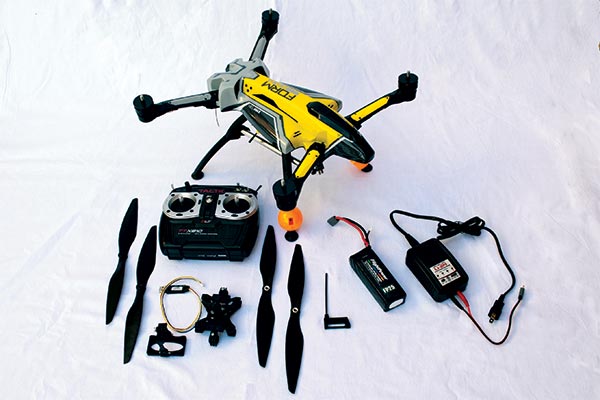
The Helimax FORM500 RTF package includes a fully built quadcopter, a radio, a battery, and a charger.
Flight Preparation
The flight controller has two flight modes: Stabilize and Position Hold. In Stabilize, the quadcopter will self-level when you release the control sticks. Position Hold also has self-leveling capabilities, but it uses GPS to keep the FORM500 in place when you are not providing control inputs. It will hover in one spot despite any wind that tries to take it away. The flight mode is selected via a three-position switch on the transmitter. The third position on the switch is for Return-to-Home (RTH). Activating this feature autonomously brings the FORM500 back to land at its original takeoff location. Headless Mode is a feature that makes all of the control inputs relative to your location, instead of the orientation of the FORM500. Pushing forward on the right control stick in normal control mode (Altitude Hold), for instance, will make the quadcopter translate in whatever direction its nose is pointing. In Headless Mode, pushing the right stick forward will cause the FORM500 to translate away from you, regardless of which way the quadcopter’s nose is pointing. Headless Mode can be a useful safety net if you lose in-flight visual orientation of the aircraft. It is important to calibrate the sensor and compass before your first flight. I made sure to complete these steps as outlined in the manual, and I balanced the self-tightening propellers before installing them on the motors.Image
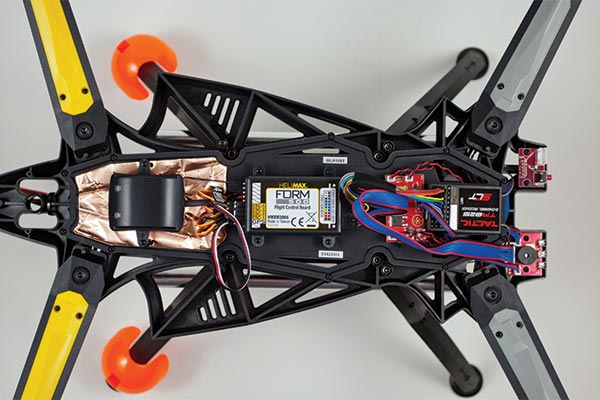
The onboard electronics are arranged in an uncluttered layout and all of the components are easily accessible.
Image
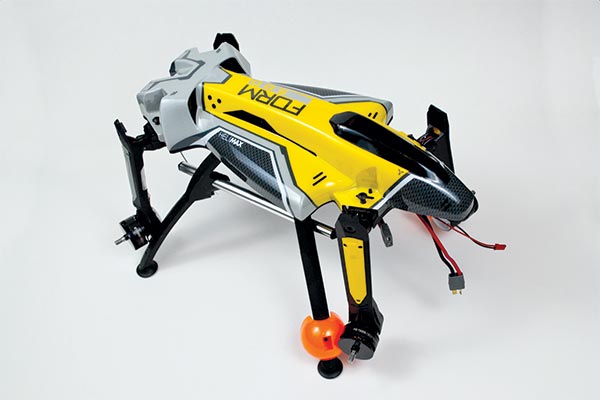
The frame arms can be folded for easier storage and transport.
Flying the FORM500
I didn’t have any trouble flying the FORM500. It responded well to control inputs and was stable in a hands-off hover. The Tactic TTX810 transmitter has one dual-rate switch that affects pitch, roll, and yaw authority. The high and low rates are preset to 100% and 60%, respectively, and cannot be adjusted, but I think these values work well for the FORM500. The quadcopter is docile on low rates. High rates provide a hint of speed and aggressive maneuverability. It might not have enough agility to satisfy sport fliers looking for a thrill, but remember that the FORM500 is a “utility drone,” not a “sport drone.” The quadcopter includes a USB interface cable that allows you to configure the flight controller via a downloadable PC program. The manual does a good job of explaining the effect of changing each of the parameters. I’m still experimenting to get the controller tuned the way that I like it, but I’m enjoying the process. Without any payload attached, I have achieved flight times of approximately 11 minutes. That duration decreases as you add weight to the FORM500 with attachments. The quadcopter automatically goes into RTH mode when the battery reaches its low-voltage threshold (as defined in the PC program). This happens without warning, and there is no way to disengage after the automatic RTH begins. To help prevent this situation, I attached a small, independent battery alarm that connects to the battery’s balance plug. It is set to sound at a higher voltage than the RTH trigger, giving me plenty of warning so I can end the flight normally.Image
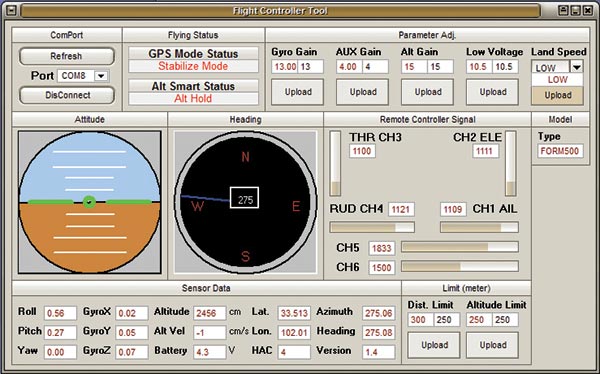
Helimax provides a USB cable and a PC program to adjust the FORM500’s flight controller to a pilot’s preferences.
Image




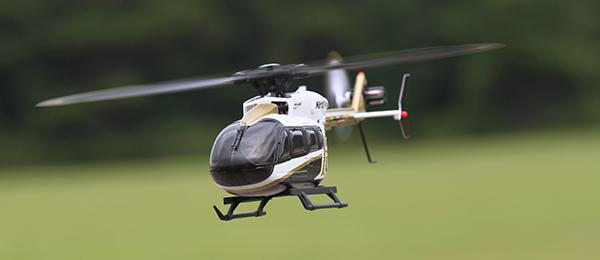






Comments
Add new comment